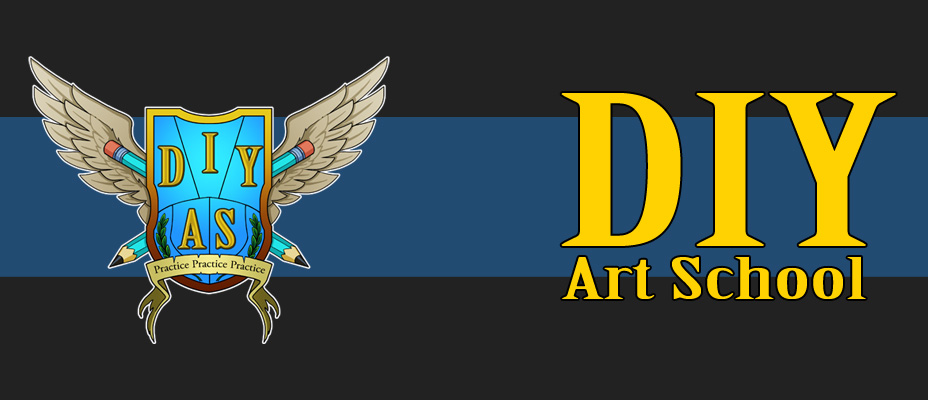 |
| Example is recreated, and does not reflect what these stages actually looked like for this image. Sadly I did not save the stages I went through creating this image. |
A "top-down" approach
I’ve mentioned in past articles the phrase “ general to the specific” and I thought I’d go into greater depth in what that means, and the variety of ways thinking this way comes in handy and helps you solve difficult problems.
Working from the general to the specific is what is known in other fields as a “top-down” approach. You start with the big picture elements, and then refine in stages, eventually reaching the smallest details. This approach works particularly well in art, and every successful artist I know works this way (although I have no doubt that there are some artists who work differently). It’s particularly well suited for art because it allows you to form a plan, to solve basic structural problems first, and then to refine to the desired level secure that the foundation of the image is in good shape.
Using it in your art
As an example, let’s plan an illustration. The first problem to tackle would probably be composition. My first question is simply, “What size do I have to work with?” If my goal was a nice pencil drawing on paper, the size is the sheet of paper. For a paid illustration, the size needed is given to me by my client. Once I know my physical constraints for the image, I need to plan for where the various elements I’m going to include fit within the image. This stage is often known as “thumbnails”, as the artist will do a lot of small rough/general sketches to work out composition of the various elements (the term “thumbnail” originates from the idea that the images would be very small, the size of your thumbnail, although most people don’t work anywhere near that small in reality). The various parts of the image may be so abstract at this stage as to simply be flat colors or values, rough shapes that don’t look like much at all. They are simply place holders to suggest their eventual placement.
Once a composition is decided, a rough sketch is drawn, using basic shapes and forms. Finally the image looks like something, but it lacks all but the most basic details. We have already planned to make sure the over all image works, here is where we make sure the individual elements work too. This is the easiest time to adjust a figure’s pose or to adjust proportions, when it is nothing more than a few lines. From there you refine the drawing in stages until you feel like you can move to color, where you again work from general problems down to more specific details.
Using it in your study
Working from the general problems down to the specific problems works elsewhere as well. For example, using the approach to guide your art education would mean to first conquer fundamentals (covered here) and then solve more complex issues. For example, to draw superheros, first you’d want to know how to draw (fundamentals), then how to draw regular people (proportions, anatomy, drawing from life), then finally how to draw the idealized super heroic versions of people (exaggerated proportions, anatomy, etc). Drawing a superhero comic book would be even more complex, moving past superheros to include composition, perspective, story telling, and more. For every thing you may want to learn, try to break it down into more basic problems.
Using it elsewhere
You can even use the process to help work through other problems. For example, if you are floundering in your art development, try looking at the problem closely. Look at the biggest potential problems, and solve each one in turn. Have you made time to study? Actual regular planned time, set aside for nothing else? Do you have the proper environment and materials to work? Do you have a plan of study? Have you been doing studies and actively working on those areas? Have you been seeking peer/pro review to give you feedback on where you might be falling short? Have you actually listened closely to the feedback and made attempts to try different approaches?

Hey, just wanted to give a thank you for this post and the others; I like the ratio of art and theory on your blog, very helpful stuff! I'll be sure to pop here more often. Can't believe I've managed to miss this place before :)
ReplyDeleteThanks Simo. The blog is relatively new, so I'm not surprised you've missed it. I'm glad to hear the material is useful! :)
ReplyDelete